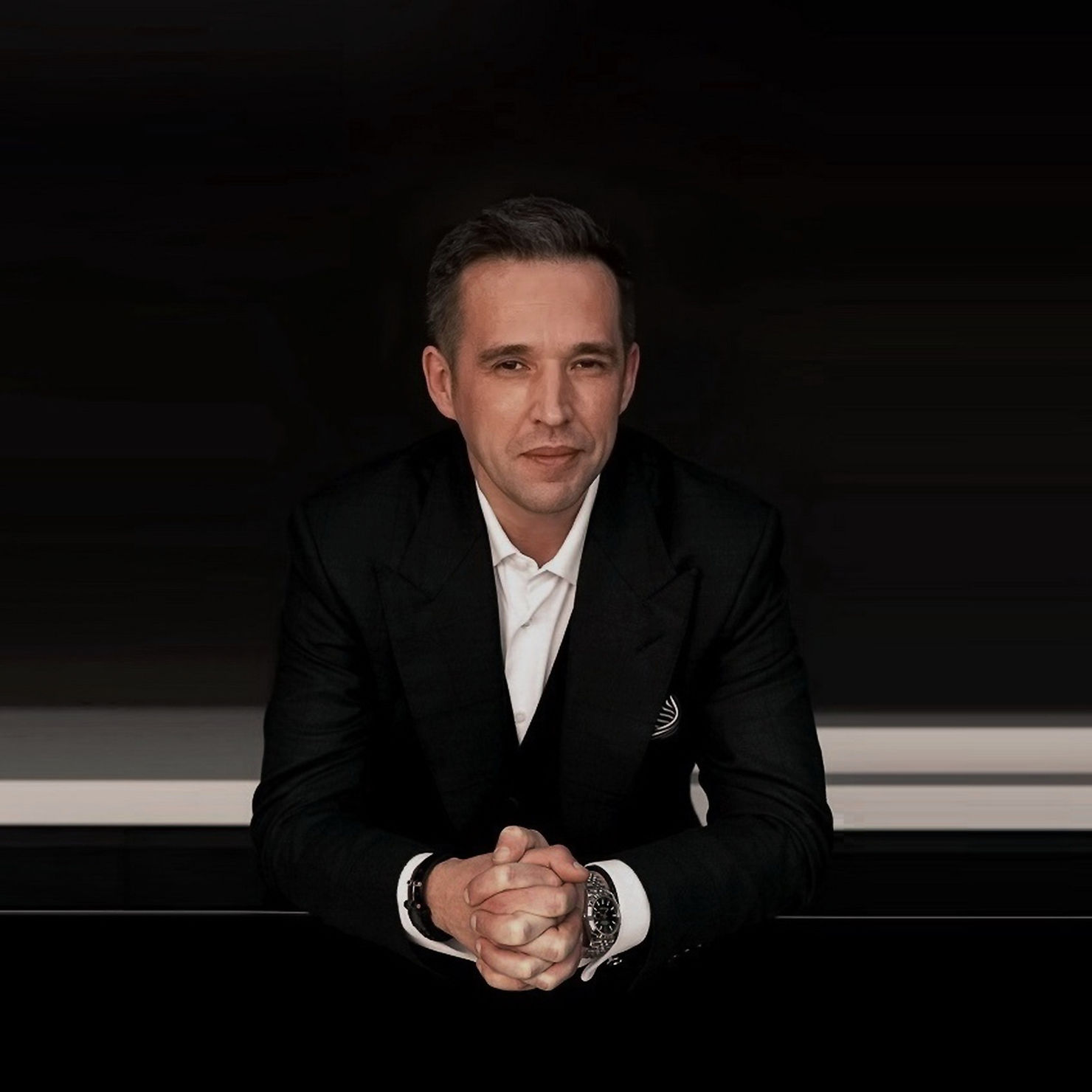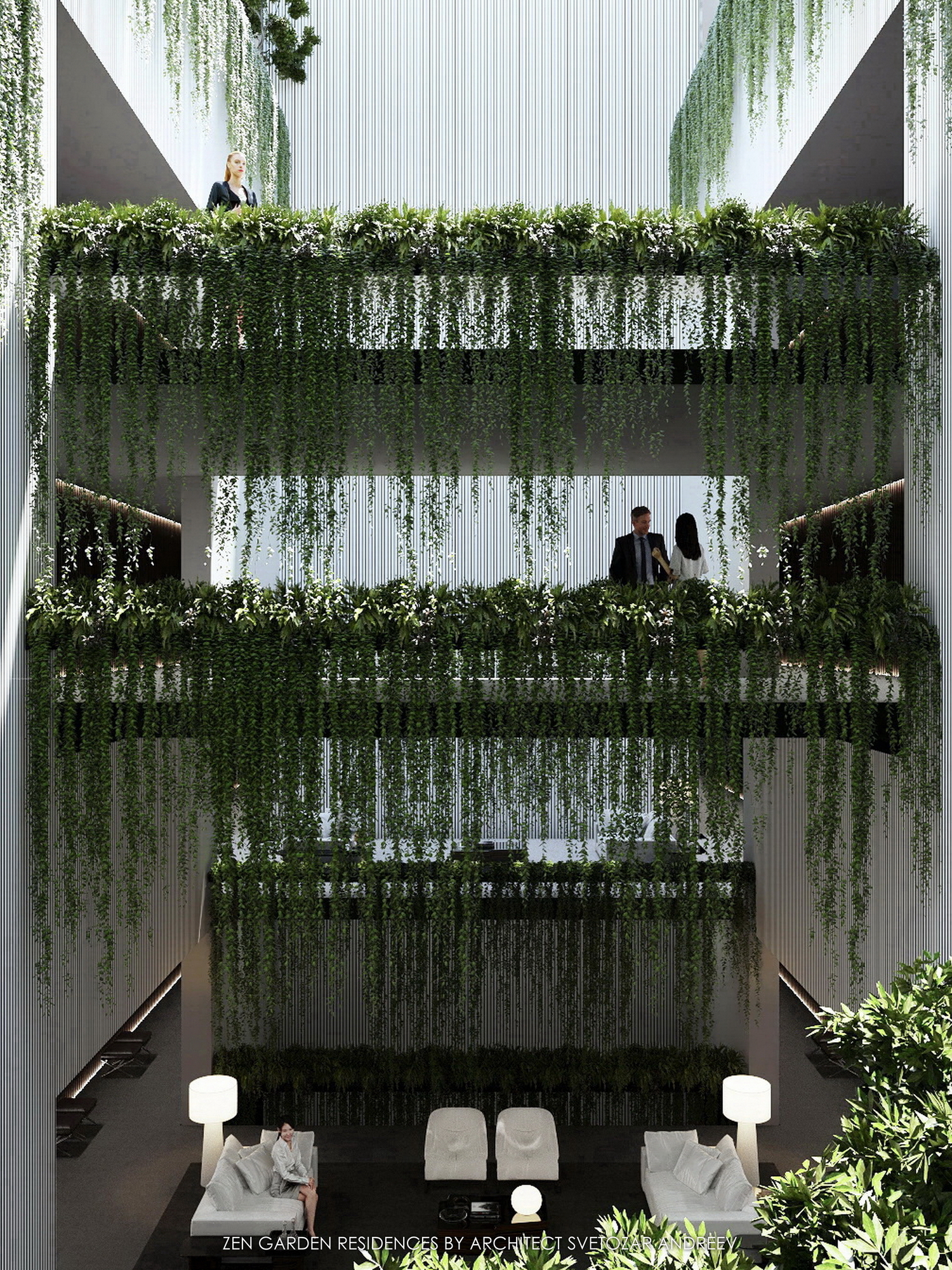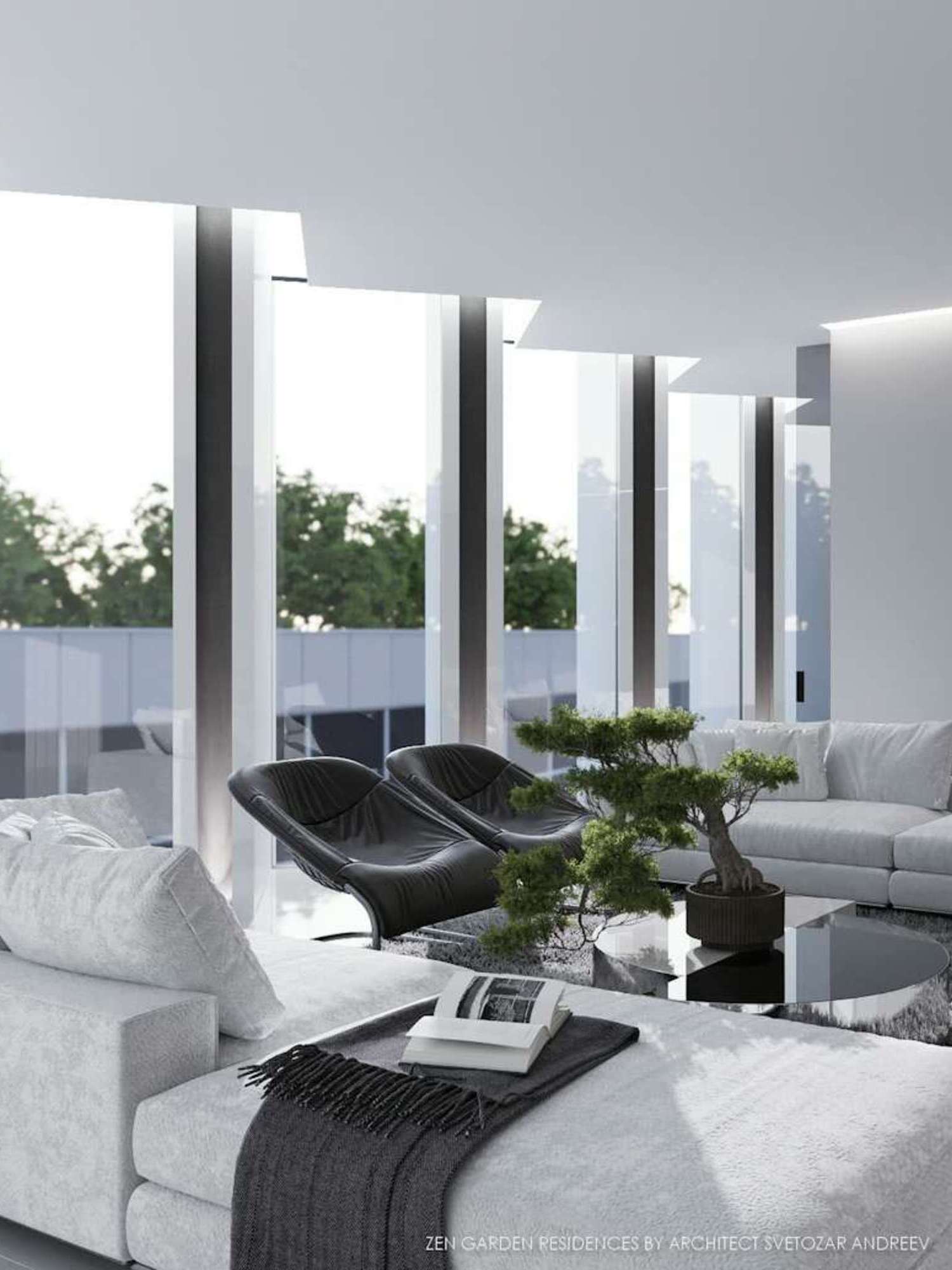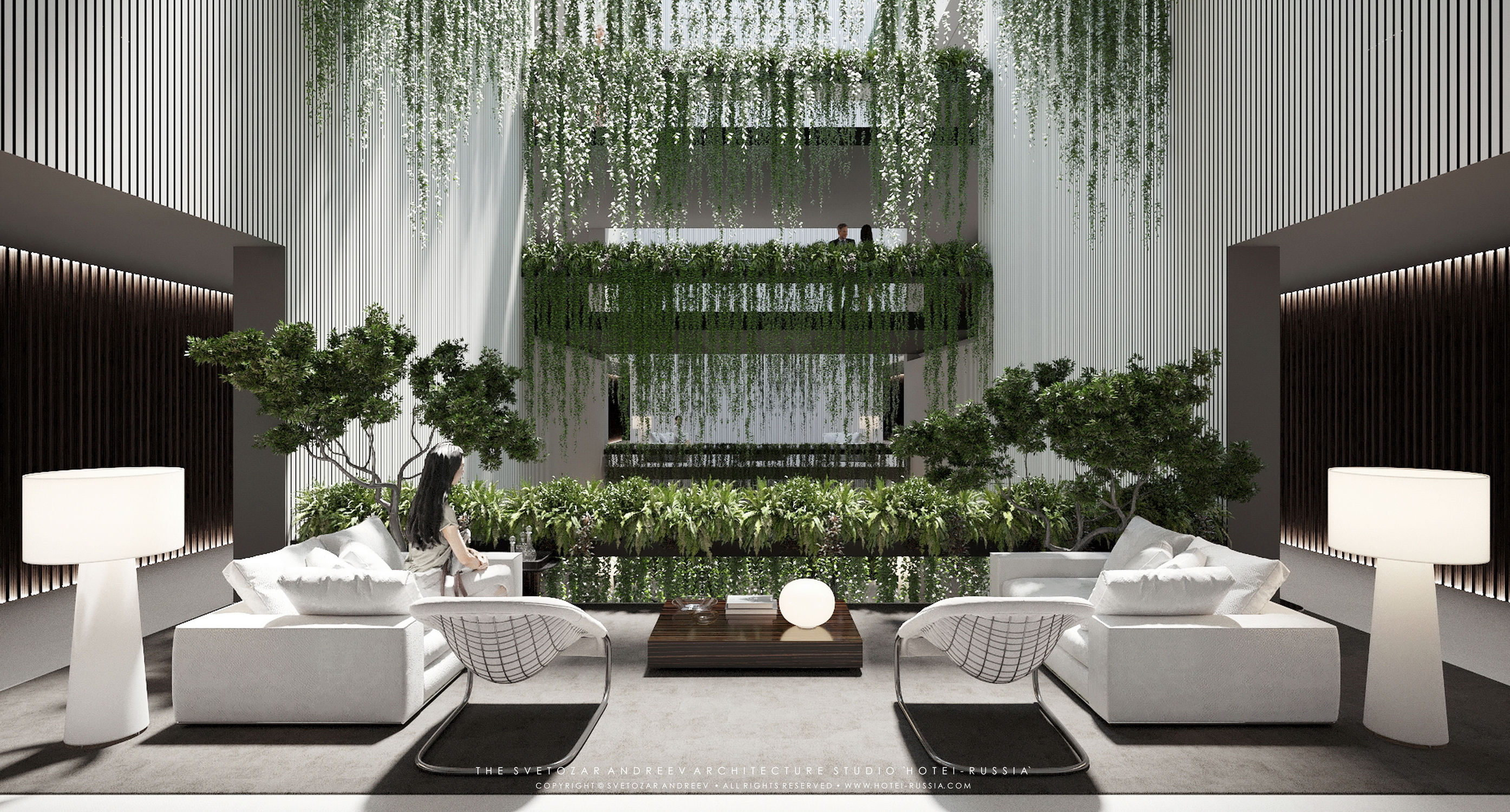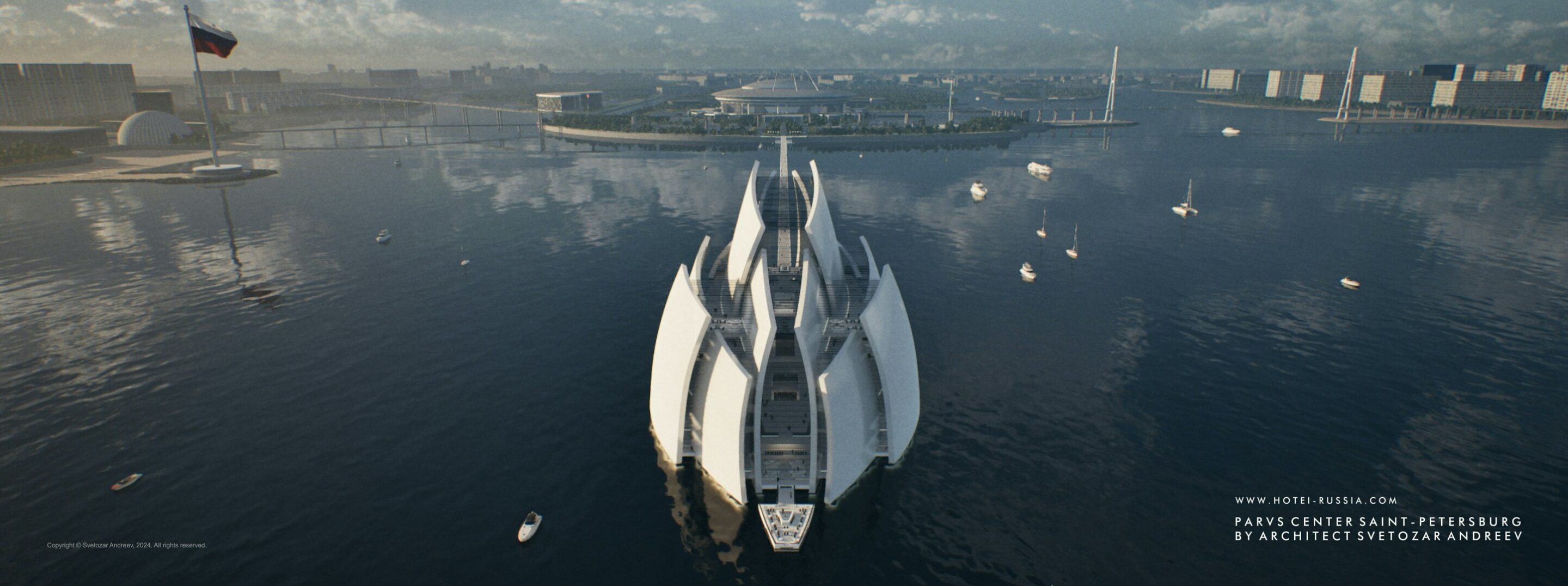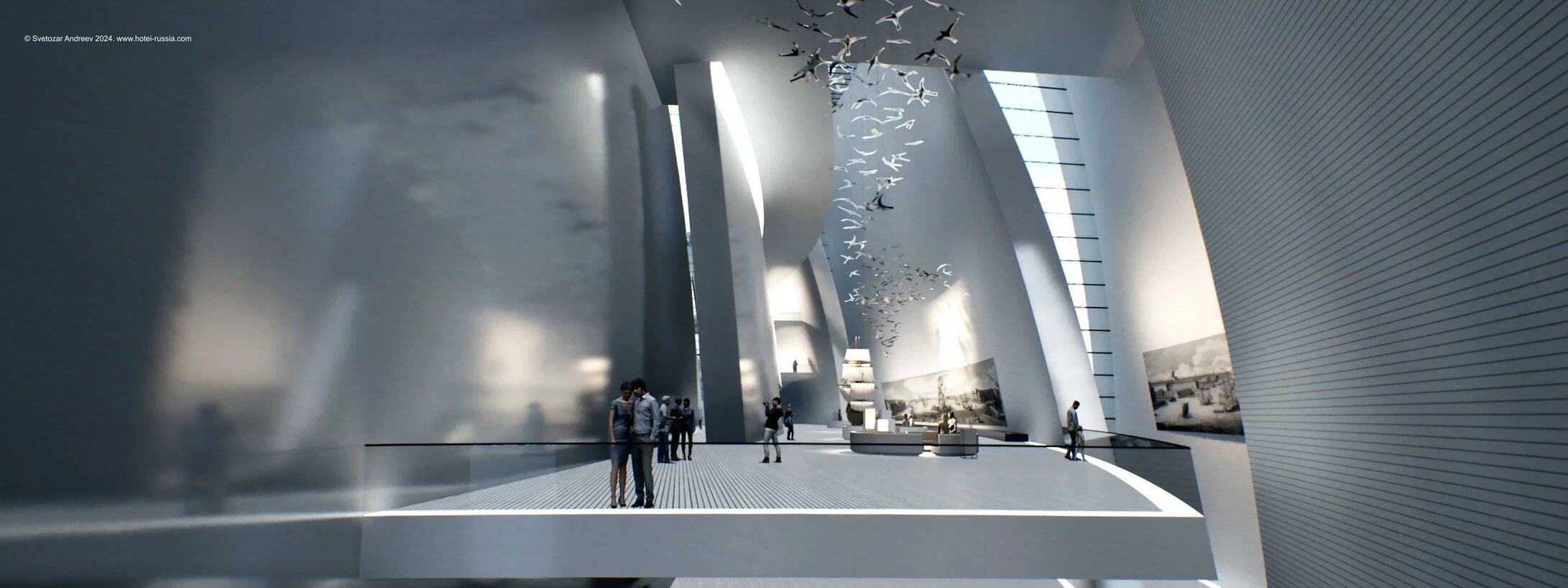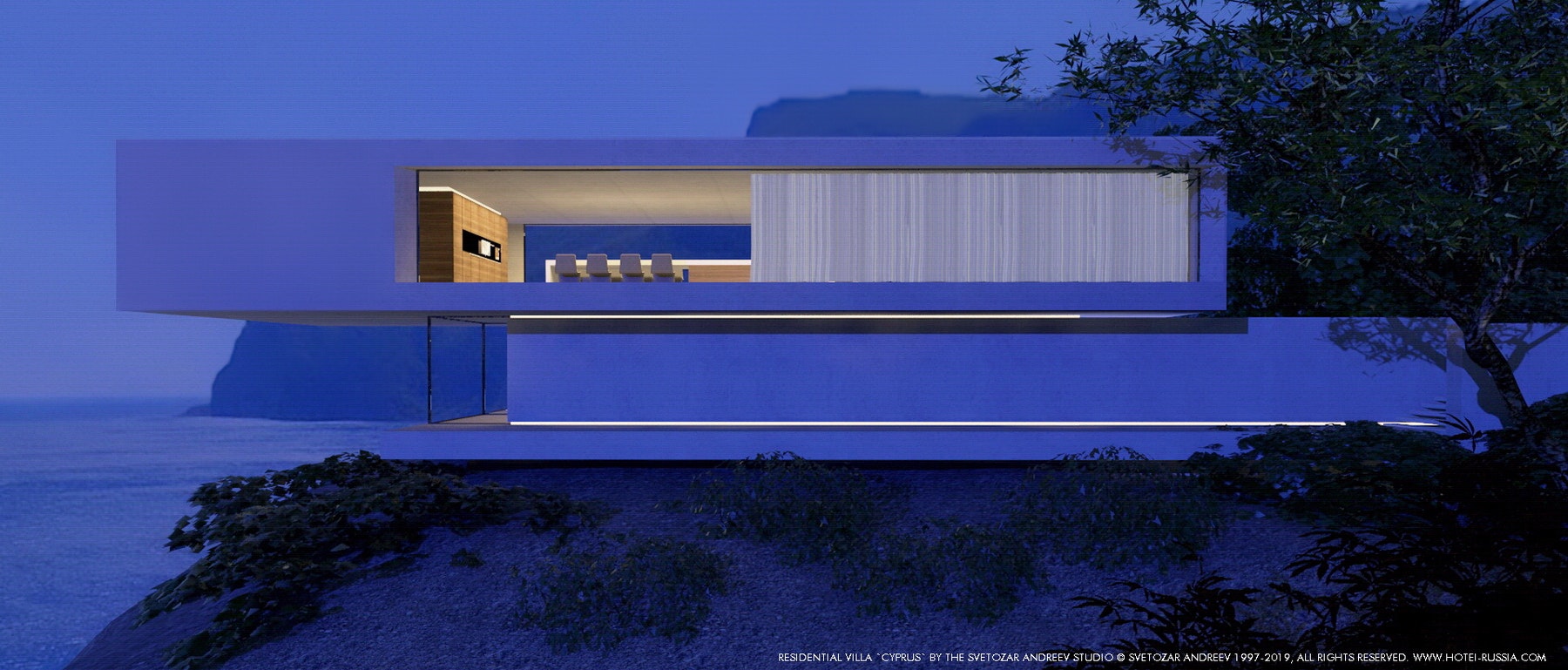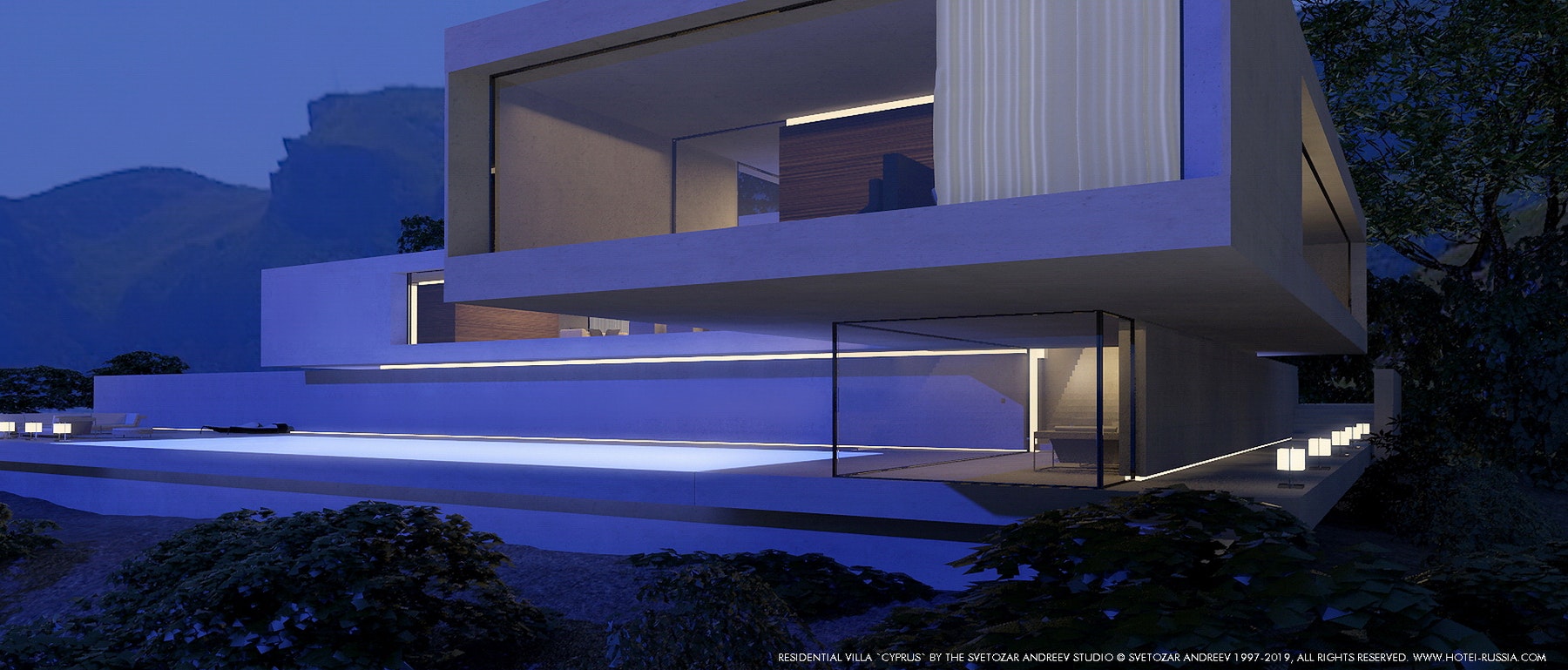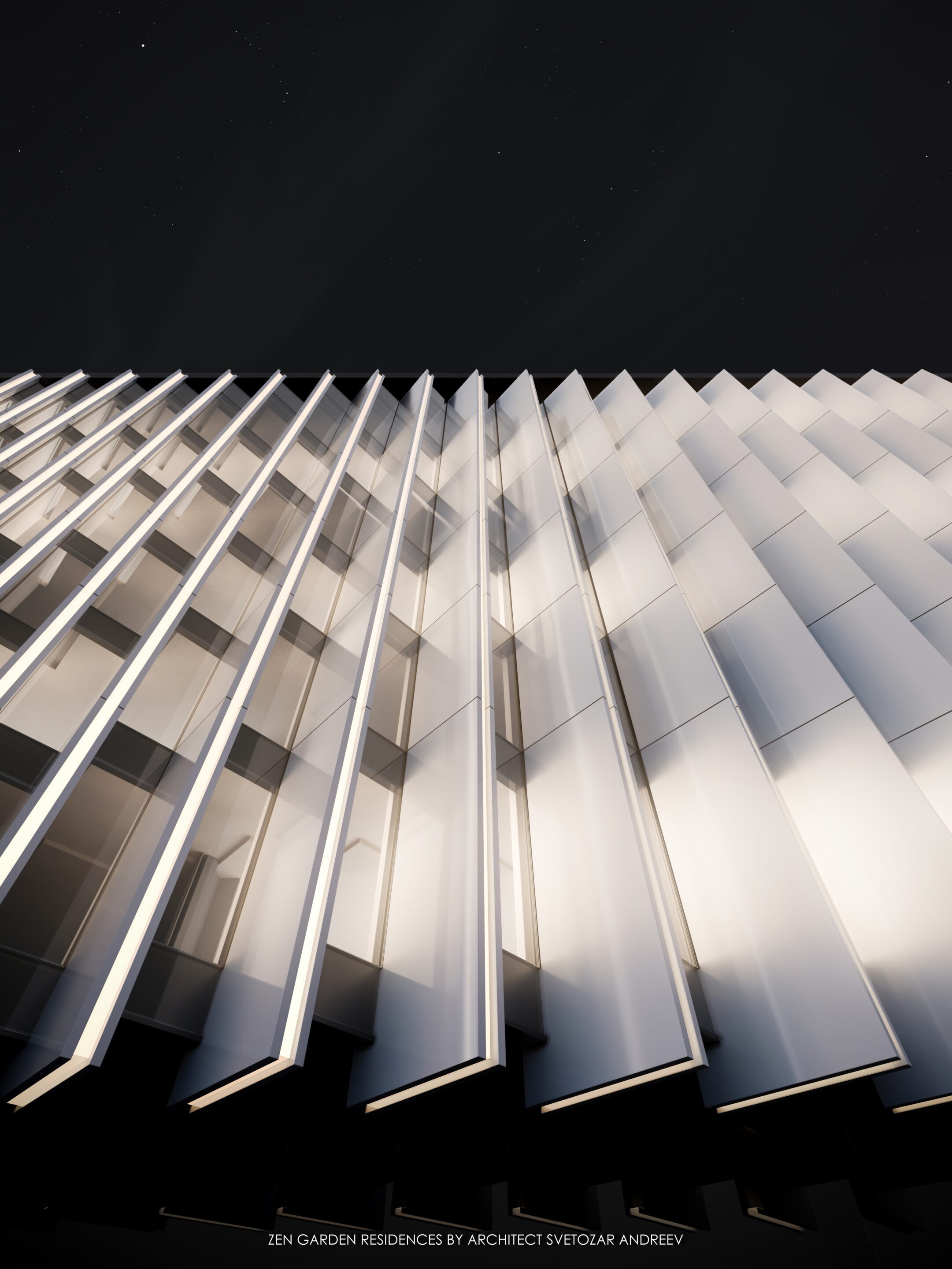
ARCHITECTURE
Shaping the Future: Architect and Designer Svetozar Andreev on His Philosophy
Article
Hotei-Russia.
Svetozar Andreev
Writer
Yana Karnaukhova
Svetozar Andreev is an architect, interior designer, and founder of Hotei-Russia studio. His projects are known for their ultra-modern approach, meticulous attention to detail, and seamless integration of architecture, interiors, and landscapes into a unified concept. Andreev’s work has received international awards and is regularly featured in leading global design publications. In this interview, we discuss his creative journey, sources of inspiration, design philosophy, and his vision for the future of architecture.
Yana Karnaukhova: Svetozar, how did your childhood in Saint Petersburg, a city with a rich architectural history, influence your decision to become an architect and designer?
Svetozar Andreev: It’s hard not to become an architect when you grow up on Nevsky Prospect 27, with the colonnade of Kazan Cathedral as your playground.
A few years surrounded by massive porticos, columns, and statues, and you inevitably start sketching projects for grand airports.
So, all it takes is removing the tasteless modern fence around the colonnade, and you’ll see a new generation of progressive young architects emerging from the city center of Saint Petersburg.
YK: Who or what had the greatest influence on you at the beginning of your creative journey? Were they people, books, or perhaps travels?
SA: I’ve never really analyzed this.
YK: What challenges do you most often face when creating ultra-modern projects in Russia and abroad? How does working in these markets differ?
SA: The main challenge for an architect anywhere in the world is the lack of preparation of the average client. I see no other challenges.
The scale of their projects, their inertia, and their readiness directly influence the speed of implementing design ideas. And as we all know, time is our most valuable resource.
For this reason, we often create large projects without clients, analyzing the needs of various regions. We understand that for many projects, clients simply cannot exist, and their role can only be fulfilled by the state, which is invested in developing large-scale architecture.
“It’s hard not to become an architect when you grow up on Nevsky Prospect 27, with the colonnade of Kazan Cathedral as your playground.”
YK: Based on your experience, what can’t architects and designers learn in educational institutions and can only understand through practice?
SA: After graduation, professors stop assigning tasks, and many former students get lost when they have to set tasks themselves.
No higher education institution can teach you how to set tasks or develop a consistent design doctrine, which is the foundation of a clear and recognizable architectural style.
Many graduates hide their lack of a consistent position behind ever-changing trends or client tastes. Both paths lead nowhere for an architect.
True education for an architect begins after they defend their diploma and should continue for a lifetime. And here, everything depends on personal qualities, talent, depth, and the author’s breadth of perspective. No one can teach you that.
YK: What idea or lesson gained over the years has been key to your approach to architecture and design?
SA: “Less is More” should never become “Less is Bore.” I hope I manage to keep it interesting.
YK: Your studio also works extensively on restoration projects. In such projects, what is more important to you: preserving the past or reinterpreting it through modern aesthetics?
SA: When working in historical centers, one inevitably integrates modern elements into the fabric of history.
I’ve done significant work on restoring old buildings, successfully embedding ultra-modern spaces within them.
Fortunately, I often dealt with buildings that had completely lost their historic interiors or had large under-roof spaces that allowed for projects with the character and scale of grand Mediterranean villas.
Over time, the rigid framework of restoration began to feel restrictive. Now, I work on large residential complexes in the center of Saint Petersburg and cultural centers that create architectural ensembles expanding on the city’s context.
To seamlessly integrate modern architecture into the urban fabric, I focus on rare locations with contemporary surroundings, parks, or coastal areas. This allows for the continuation of Saint Petersburg’s ensemble tradition while avoiding any stylistic mimicry, which I find unacceptable. Every era must speak in its own language.
“And as we all know, time is our most valuable resource.”
YK: Your signature style is known for its sophistication and thoughtfulness. How did you arrive at your unique creative language?
SA: I’ve intuitively known since childhood that my unique style existed and did everything to reveal it. I set myself systematic tasks while reading vast amounts of philosophical, historical, and theoretical literature, which helped synthesize my methodology and provided a theoretical and practical foundation.
That said, I’ve always believed that style is more akin to handwriting—it doesn’t fundamentally change throughout a person’s life, as experienced graphologists will confirm.
Now I increasingly feel that theories often feel restrictive and require constant adaptation. Above all, character often supersedes theory.
Because of this, I increasingly view my projects as natural phenomena rather than products of rigid doctrine.
YK: Your projects are always a symphony of architecture, interiors, and landscapes. What inspired your “parallel design” concept, which has become your studio’s hallmark?
SA: The modernist Massimo Vignelli once coined the slogan: “From the spoon to the city.” This, in my view, is the true role of a good architect.
Compiling ready-made modules—whether standard architectural solutions, pre-made furniture, or template materials—is not architecture. AI could handle this perfectly well.
We must think about universal design principles and perceive each project as a cohesive organism, where everything serves a unified idea, leaving no room for random elements designed for different architectural environments.
That’s why I strive to create unique architectural projects conceived as holistic entities:
from developing the overall concept to designing the logo and brand;
from custom furniture design to unique systems of interior and exterior architectural lighting that define the building’s architecture;
from individual objects to staircases and elements of visual identity.
This architectural universalism allows me to fully convey the ideas I’m working on and ensures I’m always ready to tackle any design challenge across various fields of architecture and design.
“I increasingly view my projects as natural phenomena rather than products of rigid doctrine.”
YK: Your works are published in leading publications. In your opinion, what role do the media play in shaping society’s architectural taste?
SA: The media carry enormous responsibility. Many societies, especially in the West, are not inclined to independently analyze events and ideas, instead accepting positions dictated by mass media.
We also see how many media-driven ideas quickly lose relevance due to global changes.
Currently, leading global architectural publications are dominated by various social clichés—from inclusivity and radical green agendas to a naïve belief in sustainability and other surrogates of corporate social and political narratives. What will happen to these ideas soon is clear: they will be discarded as irrelevant, along with many projects influenced by them.
Therefore, we must understand that we cannot delegate analysis and critical thinking to the media. Whenever possible, we must rely on personal experience and develop creative independence.
I doubt Western press will stop feeding audiences commercially driven trends anytime soon. Hopefully, our media will eventually stop mirroring Western narratives and shift away from sponsor-driven publications to promote progressive national architecture—similar to what many publications in Brazil are doing and what larger Latin American countries are starting to embrace.
YK: How do you feel about collaborations? Do you think they enrich the creative process, or do you value individual freedom more?
SA: I can’t stand collaborations. As the Russian proverb goes, “A child with seven nannies is not watched“, in the English interpretation of “too many cooks spoil the broth.”
Architects and other designers focused on style should be able to develop their ideas independently.
Often, you’ll see once-respectable fashion houses, desperate to please the mainstream, collaborating with sportswear brands or artists, not out of creativity but for commercial gain.
I struggle to imagine a serious fashion house like Tom Ford partnering with Rick Owens to release rapper pants simply because it’s an untapped niche. Tom Ford’s main asset is its declaration of unique style, where collaborations have no place.
So, let’s leave collaborations to the collaborators. You can’t serve two masters.
YK: What changes do you foresee in the world of architecture and design over the next 20 years, and how do you see yourself in these transformations?
SA: The future of architecture and design is becoming increasingly clear: areas that can be algorithmized, such as housing construction and interior design, will increasingly be taken over by artificial intelligence platforms. These systems will integrate modules for 3D visualization, tools for developing architectural documentation, databases of real estate objects, and catalogs of manufacturers and suppliers of interior and exterior components, furniture, and other materials.
As a result, professions such as decorator and interior designer, in their current form, will gradually lose relevance, along with a significant number of professionals involved in today’s architectural design processes.
Architects, however, will face the challenge of creating unique forms and concepts that cannot be generated by AI, which relies on analyzing and compiling existing designs. No matter how advanced it becomes, artificial intelligence remains bound to processing the patterns and data of the past. This presents architects with a choice: either return to genuine creativity, abandoning the cynical replication of trends and clichés, or consider leaving the profession altogether.
We are entering a transformative era that demands autonomous and systemic thinking. Those who can adapt to these new realities and demonstrate the ability to think independently and innovatively will shape the future of architecture.

